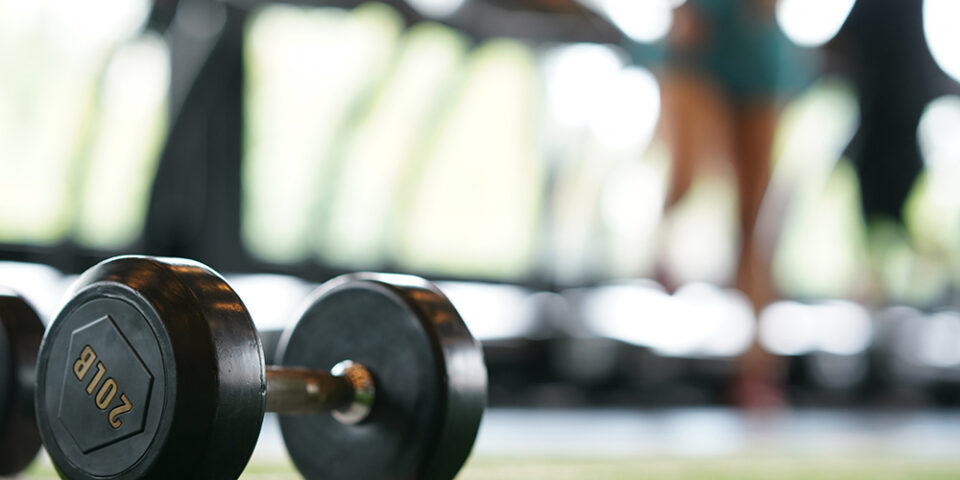What counts as exercise?
Ask your doctor what you can do to improve your health and they’ll more than likely mention adding exercise to your daily routine. Such general advice, however, can sometimes feel confusing to someone who isn’t sure where to begin. What counts as exercise? Does walking to your mailbox or down to the stop sign at the end of the street have any health benefits or do you have to go to the gym? Are there specific exercises you should be doing? Does it need to be difficult?
Exercise physiologist Ben Kelley explained what counts as exercise, how often you should be active and more.
How much exercise is recommended for adults?
According to the Centers for Disease Control and Prevention, the average adult needs 150 minutes of physical activity each week. This can include any movement, but structured exercise that pushes you physically offers the most benefit.
Do you have to go to the gym to exercise effectively?
“There’s a lot you can do outside of the gym to help with increasing your fitness,” Kelley said. “You can do yoga, Pilates, barre, hiking, biking, running or swimming. There are lots of things you can do on your own in your own environment to stay healthy.”
Most of those activities focus on aerobic fitness, increasing cardiovascular health and promoting weight loss. However, Kelly noted that strength training is also important, especially if you are older than 35 years old.
“Strength training is very important to help prevent loss of muscle and bone density,” he said.
What are the best exercises to increase your strength?
There is not a specific exercise that will help increase your strength. It’s the intensity of the movement that matters.
“To increase your strength, you need to be doing an exercise at or above 80% of your 1-rep maximum,” Kelley said.
Your 1-rep max is the most amount of weight you can lift in one repetition of an exercise. This is an indicator of your muscular strength.
“For example, if you’re doing 80% of your 1-rep max, you’re only going to be able to do approximately eight to 10 reps,” Kelley said. “So, with that weight, a good general recommendation is doing 80% for four reps. And then as you feel more comfortable, potentially moving up to five or six reps.”
To do a basic, full-body workout, Kelley said there are five movement patterns: a push, pull, squat, hinge and carry.
- A push involves pushing weight away from your body. You can use a cable stack machine or free weights, such as a dumbbell or barbell, or a smith machine.
- A pull involves pulling weight toward your body. You can do that vertically, pulling down, or horizontally, pulling toward you. You can also pull upward.
- A squat involves holding a weight in front of your body, such as a 10-pound dumbbell, and doing eight or less reps at a relatively high intensity.
- A hinge involves bending your hips versus bending your knees.
- A carry involves holding a high amount of weight and simply performing a locomotor pattern, such as walking, for 20 to 40 yards or further if you can.
Kelly said strength training is especially important for middle aged and older adults.
“Osteoporosis, frailty, mobility issues and muscle loss are common problems for this population,” Kelley said. “The number one way to be able to combat those age-related physical declines is through strength training. It will help increase your metabolism, burn fat and promote autonomy and empowerment.”
Should exercise be hard?
Exercise should be challenging, but it should not be something that’s detrimental to your daily function. A general goal is to try to get at least 1% better every day.
“You want to push yourself to the point where you’re sweating, you’re breathing hard, your heart rate is elevated and it’s a challenge, but you don’t want to be hobbling out of the gym like you need a wheelchair,” Kelley said. “Also, give yourself time to recover, and eat and sleep well. If you repeat that pattern, you will see changes in muscle structure, coordination and your body’s ability.”
Ready to start an exercise program?
A pre-exercise screening with your doctor is a good idea. Also, check out these tips on how to exercise safely.
Effective workouts from anywhere with MoveWell
MoveWell’s monthly workouts are conveniently designed to be performed from the comfort of home, in the office or even the great outdoors. Sign up for monthly workout alerts.
Sign Up Today

